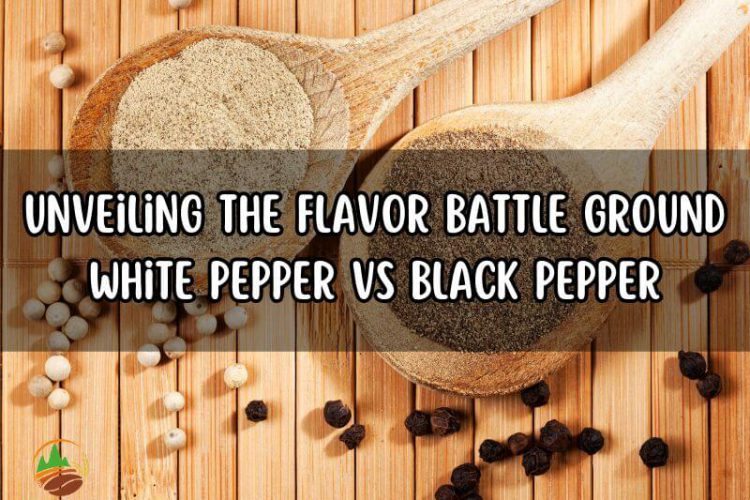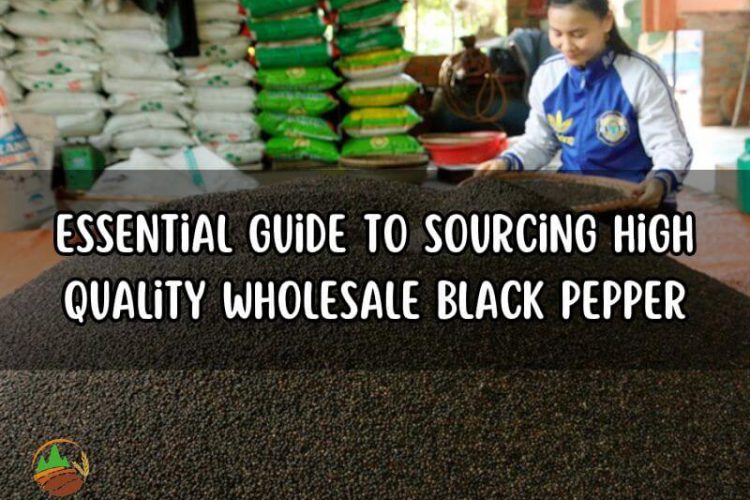If you’re planning to launch a trading that supplies cinnamon goods and you want to know more about Cassia vs Ceylon cinnamon. What is the difference between Ceylon cinnamon and Cassia cinnamon? Read this article to find out.
Table of contents
- 1. 1. Questions related to the difference between Cassia vs Ceylon cinnamon
- 2. 2. Answers for questions related to Cassia vs Ceylon cinnamon
- 2.1. 2.1. Cassia vs Ceylon cinnamon in terms of color, size, aroma and taste
- 2.2. 2.2. Cassia vs Ceylon cinnamon in terms of oil content, moisture content and coumarin content
- 2.3. 2.3. Cassia vs Ceylon cinnamon in terms of storage time
- 2.4. 2.4. Cassia vs Ceylon cinnamon in terms of growing area and quantity
- 2.5. 2.5. Cassia vs Ceylon cinnamon in terms of health benefits comparison
1. Questions related to the difference between Cassia vs Ceylon cinnamon
Here are the commonly questions related to the difference between Ceylon cinnamon and Cassia cinnamon:
- Cassia vs Ceylon cinnamon in terms of color, size, aroma and taste
- Cassia vs Ceylon cinnamon in terms of oil content, moisture content and coumarin content
- Cassia vs Ceylon cinnamon in terms of storage time
- Cassia vs Ceylon cinnamon in terms of growing area and quantity
- Cassia vs Ceylon cinnamon in terms of health benefits comparison
- Cassia vs Ceylon cinnamon in terms of price comparison

2. Answers for questions related to Cassia vs Ceylon cinnamon
Now’s time to find out what is the difference between Cassia cinnamon and Ceylon cinnamon.
2.1. Cassia vs Ceylon cinnamon in terms of color, size, aroma and taste
When it comes to choosing between Cassia vs Ceylon cinnamon, appearance can play a major role in your decision:
| Cassia | Ceylon | |
| Color | dark reddish-brown | tan to light brown |
| Size | 10-15 cm (4-6 inches) in length and 1-2 cm (0.4-0.8 inches) in diameter | 5-10 cm (2-4 inches) in length and 0.5-1 cm (0.2-0.4 inches) in diameter. |
| Fragrance | strong, bold, and spicy aroma | fragrant, citrusy, and slightly floral, with hints of vanilla and a mild spiciness. |
| Flavor | warm, spicy flavor with a slightly bitter taste | sweet taste with subtle notes of citrus and clove |
- In terms of appearance, Ceylon cinnamon is generally considered more appealing for decoration and use as a coloring agent due to its lighter color and delicate appearance. Additionally, the smaller size of Ceylon cinnamon facilitates its transportation, while in contrast, the larger size of Cassia cinnamon increases the risk of breakage during delivery.
- When comparing the fragrance of Cassia cinnamon and Ceylon cinnamon, it is subjective to personal preference. Cassia has a strong, spicy aroma with hints of sweetness and cloves, while Ceylon has a delicate, sweeter scent with notes of citrus and mild spiciness. Therefore, preferences vary between the intense fragrance of Cassia and the gentler aroma of Ceylon.
- In terms of flavor, Ceylon could overwhelm Cassia. Ceylon cinnamon’s flavor is often described as more nuanced and complex, allowing it to blend seamlessly into recipes without overpowering other ingredients.

2.2. Cassia vs Ceylon cinnamon in terms of oil content, moisture content and coumarin content
Cassia cinnamon and Ceylon cinnamon differ in their substance content and chemical composition, including their moisture content, oil content, and coumarin levels:
| Cassia | Ceylon | |
| Moisture | 13% | 8-10% |
| Oil content | 1-5% | 0.5-2.5%. |
| Coumarin | 0.7-4% | 0.4-1% |
- Moisture content: Ceylon cinnamon typically has a lower moisture content compared to cassia cinnamon. Higher moisture can create conditions for microbial growth and spoilage. It may increase the likelihood of clumping or mold formation, which can affect the shelf life and safety of the spice. Thus, Cassia requires more effort to preserve.
- Oil content: Cassia cinnamon generally has a higher oil content than Ceylon cinnamon, ranging from 1-5% compared to Ceylon cinnamon with 0.5-2.5%. The higher oil content in Cassia cinnamon can potentially result in a larger quantity of cinnamon oil during the extraction process. Cinnamon oil is widely used in culinary applications, aromatherapy, and the fragrance industry. If your goal is to find a variety of cinnamon that can effectively extract the highest amount of essential oils, cassia cinnamon would be an ideal selection.
- Coumarin: Coumarin is a naturally occurring substance found in many plants, including cinnamon. Cassia cinnamon contains higher levels of coumarin compared to Ceylon cinnamon. Coumarin can have negative effects on the liver if consumed in large amounts. Therefore, Ceylon cinnamon is considered safer for consumption than cassia cinnamon, especially in larger quantities. Ceylon cinnamon contains only trace amounts of coumarin, while cassia cinnamon contains up to 4% coumarin.

2.3. Cassia vs Ceylon cinnamon in terms of storage time
| Cassia | Ceylon | |
| Shelf life | 18 – 30 months | 2 – 3 years |
| How to preserve | Store in airtight containers away from light, heat, and moisture. Keep the containers in a cool, dark place like a pantry, and avoid storing near the stove or in direct sunlight. Remember to label the containers with the type of cinnamon and the date of purchase or opening. | |
Ceylon cinnamon generally has a slightly longer shelf life compared to Cassia cinnamon. This is primarily due to Ceylon cinnamon’s lower oil content, as mentioned above, which can result in a longer overall flavor and aroma retention. Generally, when properly stored, Ceylon cinnamon can maintain its quality for about 2 to 3 years and Cassia can maintain for 18 to 30 months.
2.4. Cassia vs Ceylon cinnamon in terms of growing area and quantity
In terms of quantity, cassia cinnamon is produced in much larger quantities than Ceylon cinnamon:
| Cassia | Ceylon | |
| Material areas | China, Indonesia, and Vietnam | Sri Lanka |
| Quantity | Around 400,000 metric tons | Around 23,000 metric tons |
Cassia cinnamon exporters primarily settle in China, Indonesia, and Vietnam, and is the most commonly produced type of cinnamon in the world. Ceylon cinnamon, on the other hand, is mostly grown in Sri Lanka due to the most suitable conditions for Ceylon to grow naturally. In 2022, the total global production of cassia cinnamon was estimated to be around 400,000 metric tons. Meanwhile, Ceylon is much lower than cassia cinnamon, estimated to be around 23,000 metric tons. If you are in search of a readily available and affordable type of cinnamon that offers a high production yield, cassia would be the optimal choice.

2.5. Cassia vs Ceylon cinnamon in terms of health benefits comparison
Both cassia cinnamon and Ceylon cinnamon have potential health benefits due to their active compounds, including antioxidants and anti-inflammatory properties. However, there are some differences between Ceylon cinnamon vs Cassia health benefits:
| Cassia | Ceylon | |
| Health benefits |
|
|
| Liver effect | Overdose of cassia cinnamon can be toxic to the liver | Safe for the liver |
Benefits of Cassia cinnamon is to lower blood sugar levels and improve cholesterol, but overdosing can harm the liver. Meanwhile, Ceylon cinnamon has anti-inflammatory properties and less coumarin than cassia, making it safer for long-term use and potentially reducing the risk of chronic diseases.

2.6. Cassia vs Ceylon cinnamon in terms of price comparison
| Cassia | Ceylon | |
| Average price | $1500 to $4000 per ton | $10000 to $25000 per ton |
According to the data of wholesale price of cinnamon in May 2023, the average price of Cassia cinnamon ranges from $1500 to $4000 per ton, while the price of Ceylon cinnamon ranges from $10000 to $25000 per kilogram, which is 5 to 6 times higher than the cassia.
In general, wholesale Ceylon cinnamon tends to be more expensive than wholesale cassia cinnamon due to the Ceylon’s higher quality, limited cultivation, and smaller quantity produced. Cassia cinnamon, on the other hand, has a stronger flavor and is widely used in the food industry, is more affordable and easier to find.






